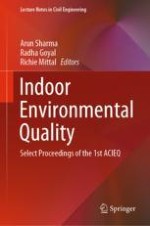2020 | OriginalPaper | Buchkapitel
Examination of Particle Characteristics and Quantification of Emission Factors for Smoke Generated from a Popular Indian Incense Burnt in an Experimental Chamber
verfasst von : Anubha Goel, Radhika Mundra, Deepshikha Ola
Erschienen in: Indoor Environmental Quality
Verlag: Springer Singapore
Aktivieren Sie unsere intelligente Suche, um passende Fachinhalte oder Patente zu finden.
Wählen Sie Textabschnitte aus um mit Künstlicher Intelligenz passenden Patente zu finden. powered by
Markieren Sie Textabschnitte, um KI-gestützt weitere passende Inhalte zu finden. powered by
